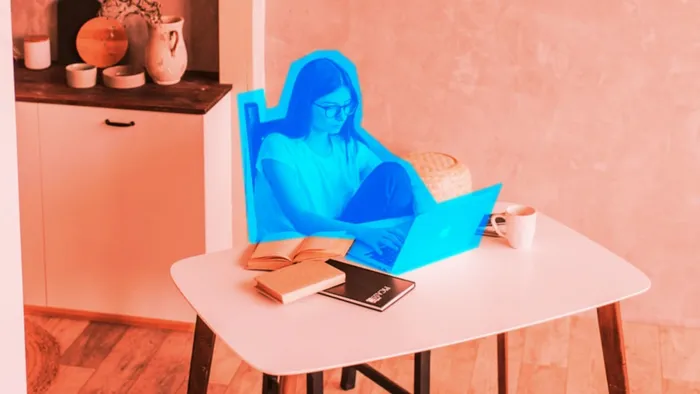
“There’s no rule book on how to communicate body language in a digital world,” says Erica Dhawan, a Fast Company contributor, and author of Digital Body Language: How to Build Trust and Connection, No Matter the Distance. “Today, we’re all immigrants in this new world, and there can be a level of misunderstanding. Body language hasn’t disappeared; it’s transformed. The challenge is creating an authentic connection when you’re meeting on camera for the first time.”
Whether you realise it or not, Dhawan says you’re always sending signals. Make sure you’re sending the right ones by paying attention to these subtle factors.
FIRST IMPRESSIONS
Just like meeting face-to-face, those initial few seconds create a first impression. Dhawan suggests being totally prepared before joining the call, setting devices to do not disturb and getting rid of any distraction to maintain professionalism. “It matters more than ever,” she says.
And don’t overlook the small talk that can be a good ice breaker. An in-person interview provides plenty of chances to use information around you, such as photos on someone’s desk, says Andres Lares, managing partner at Shapiro Negotiations Institute, negotiating training consultants.
“Those water cooler conversations serve as a lubricant to develop relationships and they’re lost or minimised,” he says. “On a video call, the person you see is in a little box, figuratively and literally.”
You need to be more strategic if you want to find a connection, Lares adds. “Before your call, look up the person on LinkedIn and get a sense of their interests,” he says.
EYE CONTACT
To create a digital executive presence, Dhawan suggests making sure the camera is level with your eyes. Instead of looking at yourself or the videos of gallery view of others, aim to look into the camera about 60% of the time. It gives the appearance that you’re looking into the other person’s eyes and can help foster an emotional connection.
“If you’re checking the gallery view, you can look disengaged or confused,” says Dhawan.
Also, avoid looking at yourself, says Lares. “Generally, in a meeting you can’t see yourself,” he says. “In a Zoom meeting, however, you can, and watching yourself can make you more self-aware to a negative point. This can make the brain more anxious about your body language.”
“If you want to check out how you look, do it before the meeting and not during it,” adds Dhawan.
GESTURES AND MOVEMENT
While you want to sit up straight, be sure you’re not sitting stiffly in your chair. Authentic body language shows engagement. Lares suggests having the camera back enough so that the interviewer can see your hand gestures.
“A study done around the TED talks found that the best rated speakers used more hand gestures,” he says. “You don’t want to go overboard, but hand gestures add a richness and extra layer of authenticity.”
Also, pay attention to your body movement. For example, leaning in shows you’re interested, so don’t be afraid to move around a bit. “It will look like you’re fully present and truly listening, especially if you’re sustaining eye contact,” says Dhawan. “Don’t be afraid to show some excitement.”
But watch out for fidgeting. “Bouncing around shows up more definitive on camera,” says Dhawan.
And don’t forget to smile. “Smiling has the capacity to change your mood,” says Lares. “It can have an impact on the way you interview, and it’s a social contagion. If you’re smiling, the other side will, too.”
YOUR BACKGROUND
Bias can play a factor when it comes to your video background, especially in a day of Room Rater. “A bare wall gives no cues about you and you could come off as dull,” says Lares. “There’s nothing there to connect with you.”
“My general rule is to have a natural background with good lighting,” says Dhawan. “It should be something simple and pleasant, such as a plant or painting that feels authentic. You want the interviewer engaged with you and not distracted with what’s behind you.”
Digital body language is a critical skill, and it can impact your results during an interview, says Dhawan. “It’s not just about how we look on the video screen; it’s how we make others feel,” she says. “When we’re online, all the nuances of basic communication are amplified. What’s most important in the modern world is to show engagement.”
_______________________________________________________________
Article originally published on fastcompany.com.
